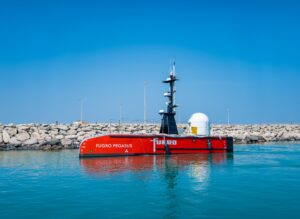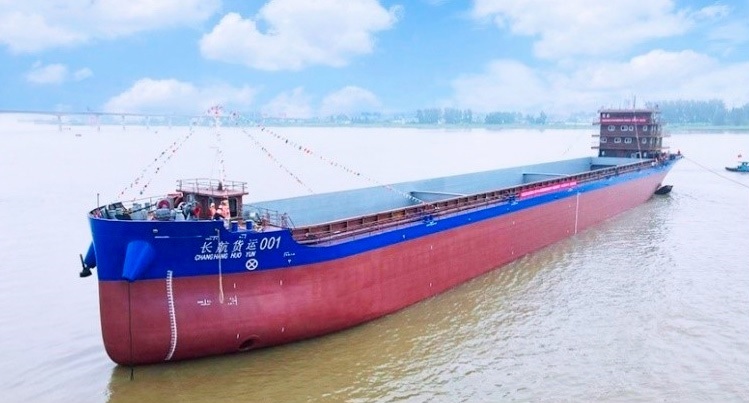China’s 18,000km of inland waterways have become a testbed for new sustainable vessel designs and intelligent control strategies.
Researchers in China have laid out an ambitious plan to improve the efficiency of transport on the country’s vast inland waterway network. The proposal builds on more than three years of pilot studies that have brought green propulsion, intelligent navigation and vessel cooperation to Chinese rivers and canals.
Alternative propulsion
Vessels with alternative propulsion are one element of the project to date. The pure battery powered 64 TEU vessel Guochang (picture below) was launched in June 2021, sailing a 270km route from Anji Port to Shanghai Waigaoqiao Wharf. The cargo vessel includes innovative technologies including a DC electrical propulsion system, containerized mobile power supply and intelligent charging and battery replacement. It is the first electric vessel in China to feature an exchangeable battery and automated shoreside charging.
A larger LNG-battery hybrid vessel, Changhang Caro 001, was launched in January 2021, sailing between Shanghai and Chongquing. In addition to efficiencies through the propulsion configuration, which includes a shaft generator, the vessel reduced fuel consumption by a further 8% through a variety of performance monitoring and optimisation measures.
Experimental vessels using hydrogen fuel cells and methanol are also being tested on Chinese waterways.
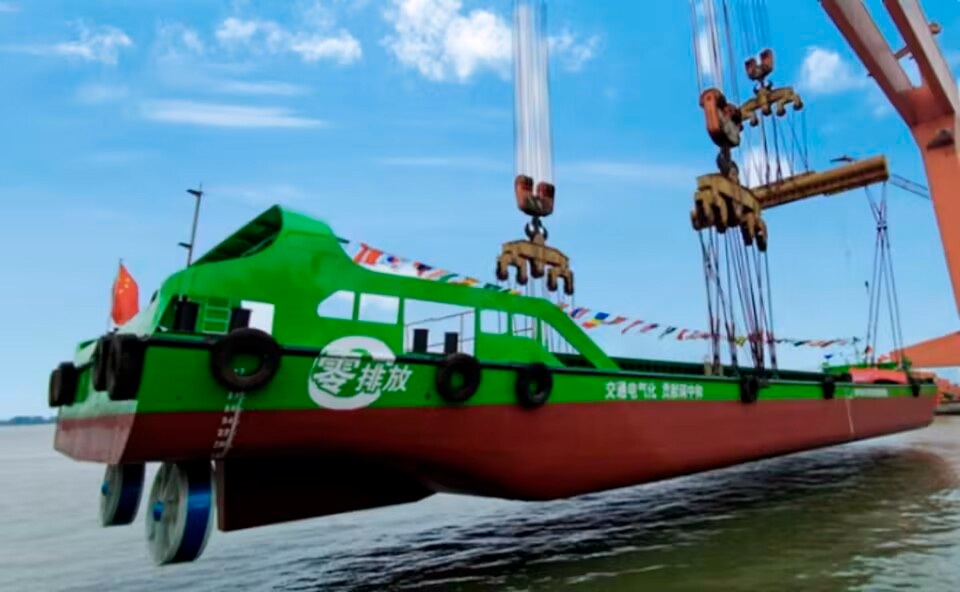
Navigation brain
The researchers are developing software, described as a ‘navigational brain system’, that will make navigational decisions using artificial intelligence to process rules, regulations and experience. Combined with senor data, the software can support crew in situational awareness and decision making for both route planning and collision avoidance. The Wuhan-based development team trained algorithms ahead of model and full-scale tests, using a dedicated simulation facility to complement physical testing and accelerate development.
The navigational brain system was applied to ferries crossing the busy Yangtze River before being installed on a full-scale cargo vessel in Zheijang province in 2021. During the test the vessel sailed for 12 miles, including one mile under remote control. An automated arm was used to give rudder angles and engine orders, received from a shore-based remote control centre.
Convoy control
European projects have already investigated the impact of vessel convoys in reducing emissions and improving safety on inland waterways. In China tests for the automatic control of ship formations were conducted at the Gezhouba vessel locks in China in 2019. Two vessels moved synchronously, maintaining distance by automated engine control.
Short-wave radar and ship-to-shore signals were used control navigation and formation through the complex task of passing through a lock. The researchers reported very low margins of error in distance keeping and speed control.
A simulation system has now been developed to accelerate improvements in vessel formation control.
Based on these early trials, the researchers have proposed a New Generation of Waterborne Transportation Systems (NEW-WTS) for China. Core components include green intelligent vessels, digital infrastructure, shore-based support facilities, and resilient, connected operations.
The research was conducted by the Wuhan University of Technology and the National Engineering Research Center, with the support of China COSCO Shipping Corp and funding from the National Natural Science Foundation of China.
Related stories
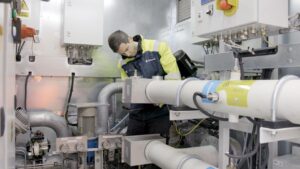
Crew training is a crucial factor for efficient BWTS operations, says Optimarin
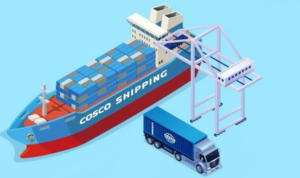
COSCO Shipping launches “Talent Athena”
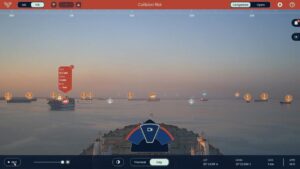

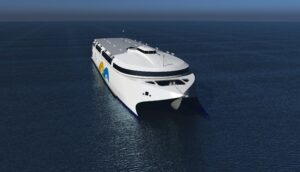
The power of marine batteries: What Hull 096 says about the future
